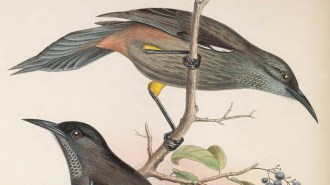Fooled you! Whirling tails of luna moths deflect bat attacks
Predators often strike at trailing streamers instead of biting the body

BITE THE TAILS Skinny tails trailing from the hind wings of luna moths, shown here in captivity, can trick attacking bats into unwise target choices.
Dexter Hinckley/Flickr (CC By-NC 2.0)






